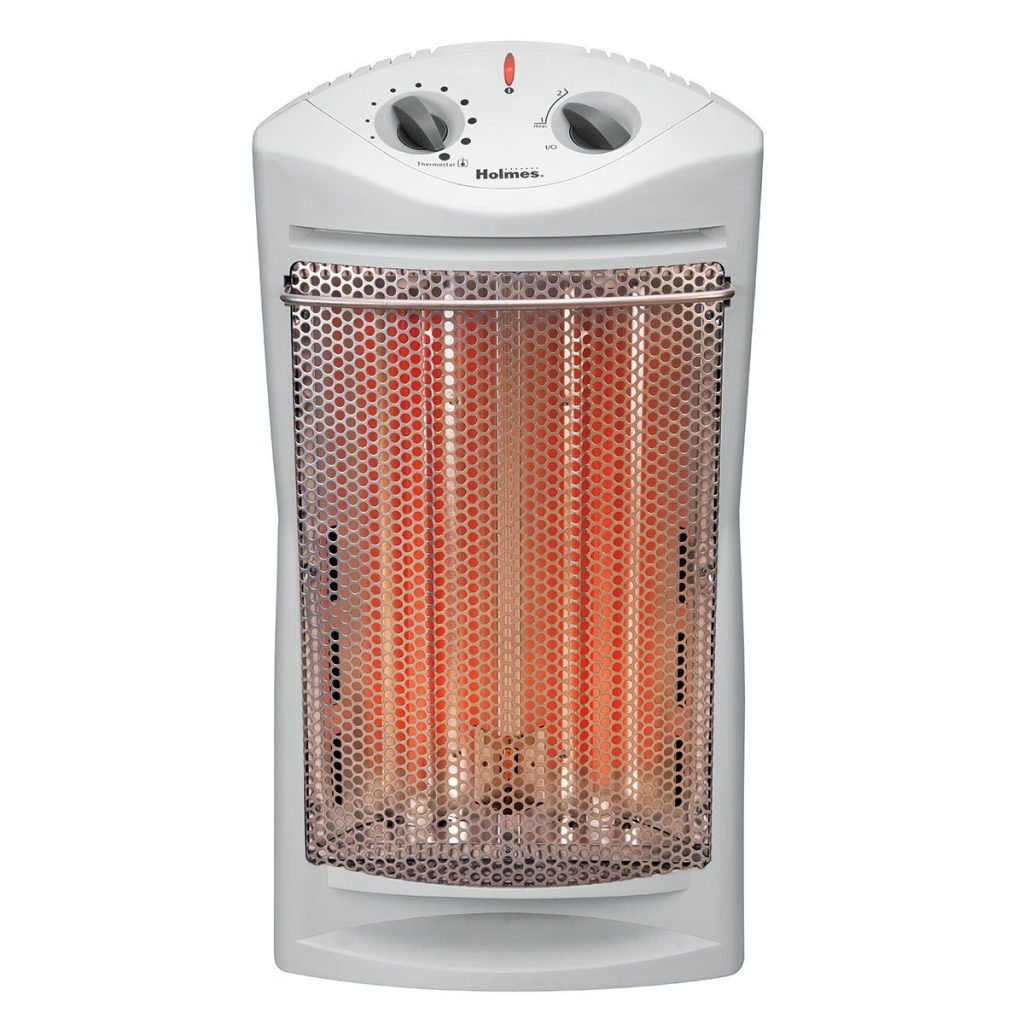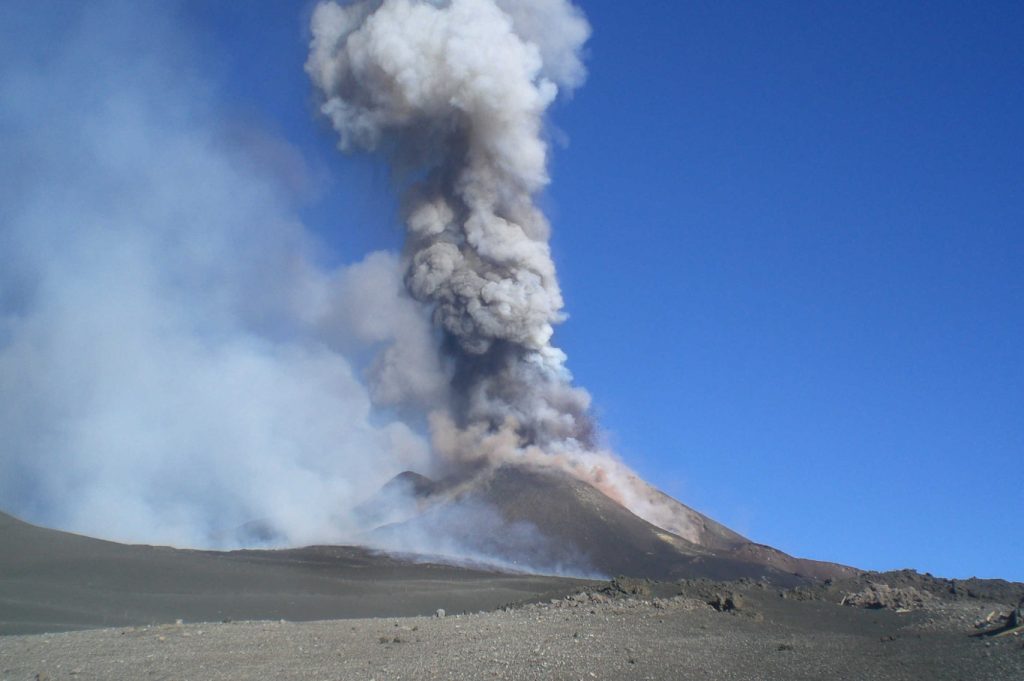It irritates me when I see manufacturers attempt to trick consumers. The majority of makers do not play this game. They present the facts, and that’s it. But, some makers do. They know that most consumers have little understanding of engineering or physics and they try to trick people into spending $140 for something a $25 product can do exactly as well.
I’m talking about portable electric heaters. I’m talking about the makers who take out half-page full color ads that leave the impression that their heater works better than any other. Apparently, this deception must work fairly well because they can afford all those expensive ads and still make money.
A Little Background
Electric heaters are extremely simple. You don’t need a degree in engineering to understand them. In short, an electric heater uses a resistive element (a big resistor) to directly convert electrical energy into heat energy. It’s the simplest electrical product possible.
Ignoring the small losses in wiring, which are always present with any electrical product, electric heaters are 100 percent efficient. This makes them even easier to understand. All of the electricity they use is converted to heat and all of the heat goes into the space you’re trying to warm. No math required.
Conversion of Units
The next two paragraphs involve multiplication. You can skip them if you want.
We convert pints to gallons by multiplying by 8. We convert liters to quarts by multiplying by 1.057. Liters, quarts, pints, ounces, milliliters, are all measures of volume. They can be converted by one multiplication. When we can convert units by simple multiplication, scientists say they are “of the same dimension.” Inches and centimeters are of the same dimension. Tons, pounds, and grams are of the same dimension.
Electric heaters are rated in terms of their electric power consumption in watts. In the USA, we traditionally measure heating power in BTU (British Thermal Units). If we want to discuss how much actual heating results and how much the electricity will cost you for that heat, we need to talk in terms of energy, not power. To do that, we add the element of time, customarily “per hour”. So we’ll use watt-hours (Wh) and BTU per hour, or BTU/h. Watt-hours and BTU/h are both units of energy, both of the same dimension. We can convert Wh to BTU/h by multiplying by 3.412. It’s that simple. A 1000 watt heater running for one hour will produce 3412 BTU of heat energy. There’s no way to change this, no way to “improve it”, it’s hard physics.
It Makes You Say “Hmm”
Imagine two identical rooms with the same thermal characteristics (insulation) and the same starting temperatures. We put a simple, reliable 1500 watt milk house heater and a 1500 watt $140 snazzy wood-grained heater with fake fireplace in the other room. Turn them both on full power. Two hours later we measure, and both rooms will have risen to exactly the same temperature. Hmm.
Why 1500 Watts?
Electric heaters have been essentially the same since the 1920s. Nothing has changed because there is nothing to change.
In the USA, domestic portable electric heaters come in power ratings that range from 200 to 1,500 watts. 750W, 1000W, 1200W, and 1500W are the most common. Why not more than 1500? The limitation is set by typical household wiring in the USA. Standard electrical outlets in the USA are protected or “fused” (with circuit breakers) at 15 or 20 amps. Voltage is 120 volts. So, the maximum power a 15 amp circuit can deliver is 1800 watts. Maximum for a 20 amp circuit is 2400W. Heater makers standardized on 1500W maximum long ago so their heaters would operate on a 15 amp circuit, with a little bit of safely margin. The bottom line here is that 1500 watts is the maximum, which sets the maximum heat output, as described above. Fancy advertising, a simulated wood grain cabinet, or simulated fireplace flames cannot get around this limit.
Don’t fall for the scam ads that claim their electric heater heats better than others. It cannot be true without violating the laws of physics.
A Common Flaw to Be Aware Of
Many electric heaters are equipped with thermostats. If you use portable electric heaters, you’ve probably noticed that those thermostats don’t work very well. They certainly don’t work well for regulating the temperature in a room. There’s a reason for that.
For a thermostat to regulate the temperature in the room, it needs to measure the temperature of the air in the room. The thermostat is located inside the heater housing, which is warmed by the heater. This is the problem. The heater runs, the heater’s enclosure/housing warms up, the room warms up, and the thermostat turns the heater off. The room cools down but the heater itself and the thermostat inside remain warm. Even worse, many heaters have the controls and thermostat located at the top of the heater for user convenience. The top portion of the heater remains warm the longest. The room may cool down to 55 degrees Fahrenheit and the top of the heater housing is still at 70 degrees from the residual heat. You’re freezing but the heater doesn’t turn on. This problem can’t be fixed without locating the thermostat away from the heater. Locating the thermostat sensor at the bottom of the heater can help, but even the bottom of the heater is warmed by radiant heat.
What’s more, in winter, there is often the problem of “stratification”. Even though the room is warm, there can be a layer of cold air near the floor. The room might even become too warm for comfort because the thermostat sensor is in that cold layer at the floor.
The only way to fix these problems and make a portable heater work like conventional heating is to use an external thermostat. Ideally, the thermostat sensor should be located about five feet from the floor.
Two Kinds of Electric Heaters
This difference is real. This difference has nothing to do with heat output in BTUs. It has to do with how living things like you perceive the warmth and how quickly it makes you comfortable.
The two kinds of heater are convective and radiant. When it comes to heating the air in a room, it doesn’t matter which one you use. When it comes to comfort, if you’re trying to feel warm, and warm in a hurry, there’s a big difference.
Convective heaters work by heating the air in the room directly, by contact with the air. They nearly always have fans to blow air across the heating element. They give off no light because the heating element is at a temperature of 400 to 600 degrees Fahrenheit. You turn it on and the air in the room gradually warms according to laws of physics. You can calculate what will happen and measure it. All “ceramic” heaters are of this type.
Radiant heaters emit most of their heat as infrared radiation, which warms objects in the room, including you, which then warm the air by convection. Radiant heating elements operate at temperatures from 1,000 to 2,000 degrees, Fahrenheit, so they give off light as well as heat.
If you walk into an ice-cold room and turn on a 1500 watt convective heater, it might take 20 minutes or longer to perceive warmth, and even longer to become comfortable. If you do the same with a radiant heater, it takes about 30 seconds for the heating element to warm up, and you immediately feel warm, regardless of the temperature of the air in the room. You’ve likely experienced this in front of a roaring fireplace or an outdoor campfire. In both cases, the warmth you perceive is all infrared radiation. The air might be below freezing, but if you stand by the fire, you feel good.
It would seem that radiant heat is much better. So, why are most heaters sold convection heaters? The answer is cost, ruggedness, size, and safety. Convection heaters are cheap to make, rugged, smaller, and arguably safer because they operate at lower internal temperatures. Convection heaters are more “idiot-proof” or “child-proof”.
Radiant heaters have to be physically larger in order to keep the temperatures involved at a reasonable level. Modern radiant heaters have quartz elements that are somewhat delicate. Rough handling can break them. The user has to be conscious of where the heater is located and what it’s aimed at because a radiant heater heats the objects in front of it. A radiant heater must be kept in the clear. If you place a 1,500 watt radiant heater facing a wall 12-inches away, it will blister the paint on the wall and could start a fire. Pay attention to what the heater is aimed at. On the other hand, radiant heaters are wonderful things if you use them responsibly.
In the past, radiant heaters were considerably more expensive than convection, but this has been changing recently. My favorite heater is one of these:

This heater is produced by a maker in China and for years was sold mostly under the Holmes brand. Years ago it sold for $190. When I bought my first one, I paid $139. Later, I bought second at $79. Today, you can get these same heaters for around $40 to $50. Chinese mass production has driven down the cost of those quartz elements. Of course, the cheaper units don’t have the Holmes name on them.
The bottom line, in my opinion, is that today there’s no reason for a thoughtful adult in a home setting to use anything other than a radiant quartz heater. Since they make you feel warmer for a given amount of electricity consumption they are more energy efficient. Cost of the heater itself is no longer an argument.
If you’re in a setting with irresponsible people, children, the elderly, animals, dirty, wet, or rugged environments, your considerations may be different. A quartz heater may not be the best choice unless it’s an industrial type, permanently mounted up high, out of reach.


Recent Comments